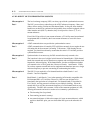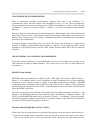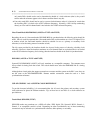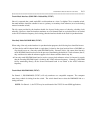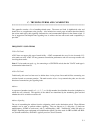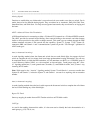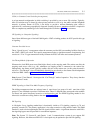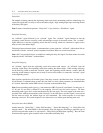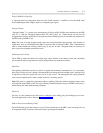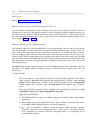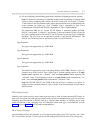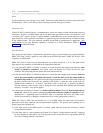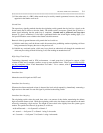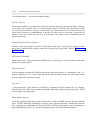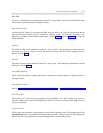C-4 TRUNKING TERMS AND CAPABILITIES
_ ___________________________________________________________________________________________________________________________
_ ___________________________________________________________________________________________________________________________
_ ___________________________________________________________________________________________________________________________
Delay-Dial
The method of alerting whereby the originating switch waits for the terminating switch to acknowledge (via
a start-dial signal) that it is ready to receive the address digits. Digit sending begins upon receiving the end
of the delay-dial signal.
Note: In terms of functional operation, ‘‘Delay-dial’’ is very similar to ‘‘Wink-Start’’ signal.
Delay-Dial Incoming
An ‘‘off-hook’’ signal followed by an ‘‘on-hook’’ signal. The ‘‘off-hook’’ signal functions to alert the
originating switch that the receiving switch acknowledges receipt of the trunk seizure. The ‘‘on-hook’’
signal functions to alert the originating switch that the receiving switch has connected a register and is
ready to receive the address digits.
Following distant end trunk seizure, a communications system sends the ‘‘off-hook’’ within about 100 ms
and follows with the ‘‘on-hook’’ portion anywhere from about 200 ms to several seconds later.
Note: APLT can provide dial tone, in addition to sending the delay-dial signal. For these trunks, the switch
responds with the ‘‘Off-Hook’’ in about 400 ms.
Delay-Dial Outgoing
An "off-hook" signal from the originating switch that causes trunk seizure. An "off-hook" from the
receiving switch delays the originating switch from sending the address digits. While waiting (delaying)
for the receiving switch to return the "on-hook" signal, the originating switch connects a sender. After the
receiving switch connects a register (and is ready to receive to the address), it returns the ‘‘on-hook’’ signal
to the originating switch.
Most switches consider the call blocked (glare) if the delay exceeds a specified time limit. For the System
85 and Generic 2 communications system, this time limit is a fixed system parameter (not administerable)
at 5 seconds. Most other vendor PBXs also use 5 seconds as the maximum delay.
Note: Some networking trunk types (e.g., both DIMENSION PBX, System 85, and Generic 2 trunk types 41,
43, 46, and 47) use what is referred to as the outgoing Universal start-dial trunk sequence. For these
networking trunk types, the 5-second maximum delay does not apply. The exact length of the time-out is
specified in the trunking characteristics table. However, in the event that a start-dial signal is not received
and the time-out occurs, the address digits are still transmitted. The switch response is no-fail upon
detecting a time-out! This switch response is also referred to as (no-failure upon detecting time-out)!
Delay-Dial Start-Dial (DDSD)
Another name for ‘‘Delay-Dial,’’ ‘‘Delay-Dial Incoming,’’ ‘‘Delay-Dial Outgoing,’’ or ‘‘Delay-Dial with
integrity check.’’ The term DDSD is most frequently used with regard to describing a particular type of
special access/toll-office trunk. It is equivalent to ‘‘Delay-Dial with Wink-Start signaling.’’ But, the same
restriction with regard to glare resolution exists as described with Delay-Dial.



